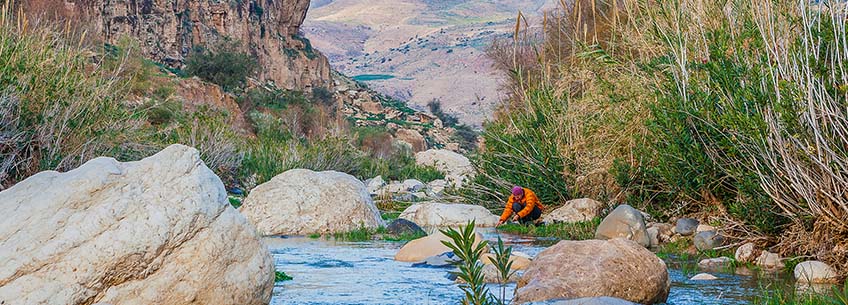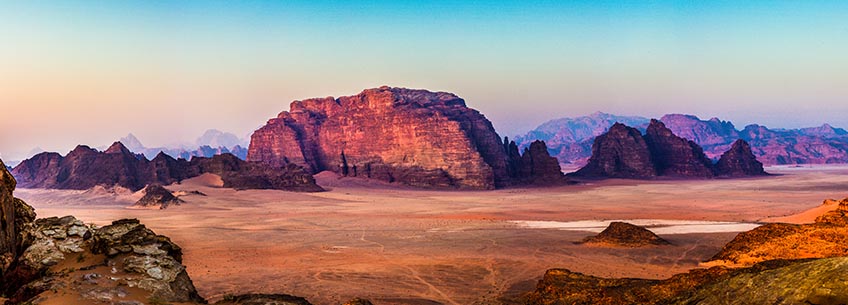Packing for Jordan generally follows the same guidelines as packing for a trek anywhere else – ensure you have the equipment needed to keep you safe and comfortable in the wilderness, know how to use it, and don’t carry more weight than needed.
The climate in Jordan is relatively mild during the hiking seasons; snow and freezing temperatures can occur in winter at high elevations, though, and rain and high winds are also very likely in winter. Therefore, your clothing should prepare you for rain and cold, though snow preparations (such as 4-season tents) are not likely to be needed. On the other end of the weather spectrum, you’ll probably encounter heat in all but the coldest months and should bring light, breathable clothing which also provides sun protection. In general, quick-drying, breathable materials like synthetic fabrics and merino wool are better than cotton, with the added benefit of not smelling as bad.








